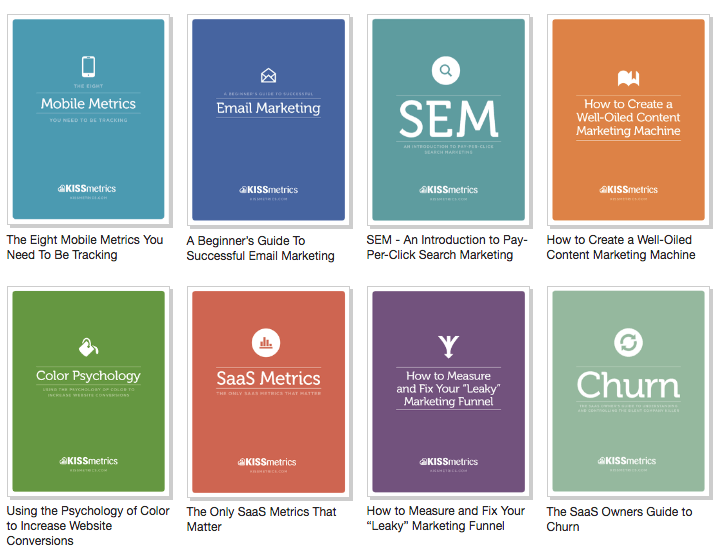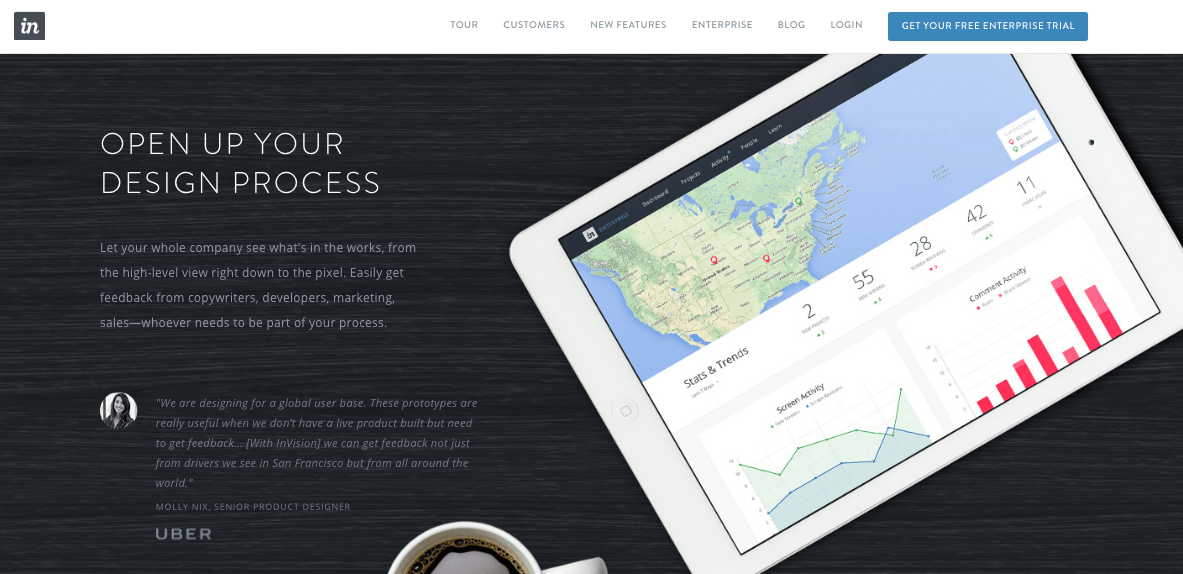For SaaS tech companies, shaping a great digital marketing plan is all about addressing the now while planning for the future.
Building software that lasts is one that never rests on its laurels and keeps innovating and fine-tuning its service offerings, and the same goes with its digital marketing.
A powerful SaaS digital marketing plan should always be on the lookout for the users of tomorrow. And to do this it needs to keep a keen eye on the future, not only in predicting trends, but also in the ways it can be the constant ‘disrupter’ in shaping new consumer habits.
1. Focus on pull interactions
Plan for more pull interactions with your customers, from social media to online communities, rather than push campaigns to market your brand. Push interactions are things like sales displays at retail stores, while pull interactions use inbound marketing techniques, from social media to blogging, to build brand loyalty and draw people to your products and services.
And the concept of pull marketing in itself sounds a lot nicer, don’t you think? Being pulled along into an experience that requires little effort, rather than having something pushed in front of you that you’re not quite ready for.
And while both still have their place, perfecting pull interactions is becoming increasingly important as the online world expands and the demand for freely-accessible content grows.
This has become part-and-parcel of being a tech developer. Not only providing software as a service, but upholding the concept of a free online world, a quid pro quo, where ideas will always be freely-accessible.
And so for SaaS businesses, this is where pull interactions can be rewarding. It creates a win-win scenario for everyone; enriching peoples lives with free information while helping tech businesses build their brand worth. And it has worked for all the top SaaS companies, from Hubspot to Xero and Marketo, with pull interactions as the determining factor in drawing consumers to their brand.
One of my favourites for pull interactions is Kissmetrics, who have perfected the art of shareable content.

They offer a huge library of content on SEO, digital marketing and analytics, which is easy to access, simple to read and highly shareable. It has educated me, made me feel smarter, and given me something to post and talk about. And this is exactly what they want. Buying goodwill through good, free content. It’s that simple, and there is no way a push interaction could achieve the same result.
So this is the challenge for the SaaS companies of the future, finding the best new ways to offer educational content, from animated ebooks to interactive experiences, and making sure they’re free.
2. Get into clickable UX prototyping
When developing or refining a website, app or app extension, clickable UX prototyping and virtual user testing is a must for every phase of a tech product’s life.
Clickable UX prototyping helps you step through your software, from login to exit, with an eagle-eye view of every interaction, to find the easiest, most intuitive and enjoyable user path. And this will deliver a huge difference to the impact and effectiveness of your Saas products, and should be a top digital marketing plan priority.
UX experience has the greatest potential to influence a long-term state of love or hate in a user. If your Saas product is hard to use then you’ll find it difficult to gain traction, and users will jump ship when a better competitor comes along. A great UX experience, on the other hand, is like saying ‘I get you’. And this is the greatest compliment you can pay to a user, helping your product spread like wildfire.
Apps like Invision are great for the future of prototyping, moving you from the paper post-it-note to a high-fidelity online version, where you can work through every screen, process and interaction, with a micro-to-macro view, and share this logic with your team members for review. This can then be refined over and over again until the best approach is found, saving on development costs.

And from here it’s also vital to get into the practice of virtual user-testing. If you’re making multiple sites and software applications then it’s essential. Companies such as User Testing offer you access to a whole community of tech-minded developers, who will test your product and give you feedback. Maybe a feature you love no-one likes at all! And this you need to know. Do the hard work first. Dive into user-testing and stop that little snowball from rolling downhill and picking up extra development costs.
3. Leverage lookalike audiences
Facebook started the idea of lookalike audiences, helping find ways to reach new people likely to be interested in your products and services. Here you can target the exact demographic to that of your existing customers, and a whole set of sources can be used, from people who visited your page or ‘liked’ a post, to shape your lookalike community.

While other platforms don’t offer the exact same ‘lookalike’ function, they offer similar ways to find audiences that may be of value – from building lists in Twitter to hooking into high-value profiles in LinkedIn.
The logic of ‘lookalike’ is really what you want to tap into. You already know your direct market, but what other pockets of users are out there right under you nose? And once you start looking, you’ll realise there are lookalike audiences everywhere, all you have to do is determine what sources are important to you at the time.
Do they need to be in a particular industry? Have specific online habits? Share similar content? Use one form of social media over another? The source types you choose can be tweaked, changed and added to as you go. The important thing is to just start building lists of potential lookalike audiences to add to your marketing database.
The more research you do now, the more prepared you’ll be when new technologies, like artificial intelligence, come along that rely heavily on understanding online behaviours.
4. Get serious about video
“More than one billion people visit YouTube every month watching more than seven billion videos every day.” – 28 Tips To Start A Vlog
This is enough to tell you everyone loves video, especially if they include Brazilian dancing babies and cats. And there are many video sharing and live streaming platforms rising up – from Twitter’s Vine to Periscope and Twitch – that cut through all the content and speak louder than anything else.
“Bloggers that use video well have a better chance of attracting a large audience and differentiating themselves from competitors.” – 28 Tips To Start A Vlog
And the same goes for live streaming videos, with platforms like Ustream offering live streaming user-generated content. This has made broadcasting a whole lot cheaper and easier to do, and made ‘virtual’ the next frontier for digital marketing.
So get serious about video as fast as you can. Link with videographers, animators, artists, game developers and more, and build an armoury of visual designers that will help market your product off the page and into the future – they will also bring an army of dedicated followers with them, which creativity can only buy.
5. Bring back the meet and greet
This is the old-school new-school realisation that real human contact is the icing on the cake.
There are a lot of great tech ideas out there and yet many of these have never gone on to succeed. And why is this?
Timing, funds, traction, these are only a part of the reason why some ideas fail while others fly. Ones that were bound for success have fallen flat, while others that were smaller, with less features, maybe not even as good, have chipped away quietly and risen up through their strength of industry connections.
And this is a big one. Having real and exclusive access to your target industries and users, and forming lasting relationships that give you better insight into their needs.
So bring back the meet and greet and make it a key element in your digital marketing plan. Roll up your sleeves and meet your clients, visit their environments, connect with them regularly online, work through their issues, listen to their woes, and in return they’ll reward you with trust and that golden ‘word of mouth’.
Getting to know your users at the coalface will build loyalty, which will stick to you like glue. It’s also the lean startup approach of testing and releasing new software based on the feedback of your real live users. And they will forgive you all your glitches if you offer great ongoing support.
Be the disrupter or get disrupted
“We have a motto in our company that states, ‘You disrupt yourself, or you get disrupted.’ It’s written on our wall and it’s something we live by. It reminds us that if we’re not on the bleeding edge of digital strategies, then someone else will be, and they’re going to steal our lunch money.” – Forbes
With technology and the online world colliding, the whole fabric of how we live is already in disruption, so why not be the head disrupter?
Don’t get too comfortable sticking with what works now, the chances are it will be out-of-date in no time at all. And that goes with my advice. Absorb it, run with it, and then discard it when it’s obvious that the times have changed and there’s a better way to plan a future digital marketing plan.




